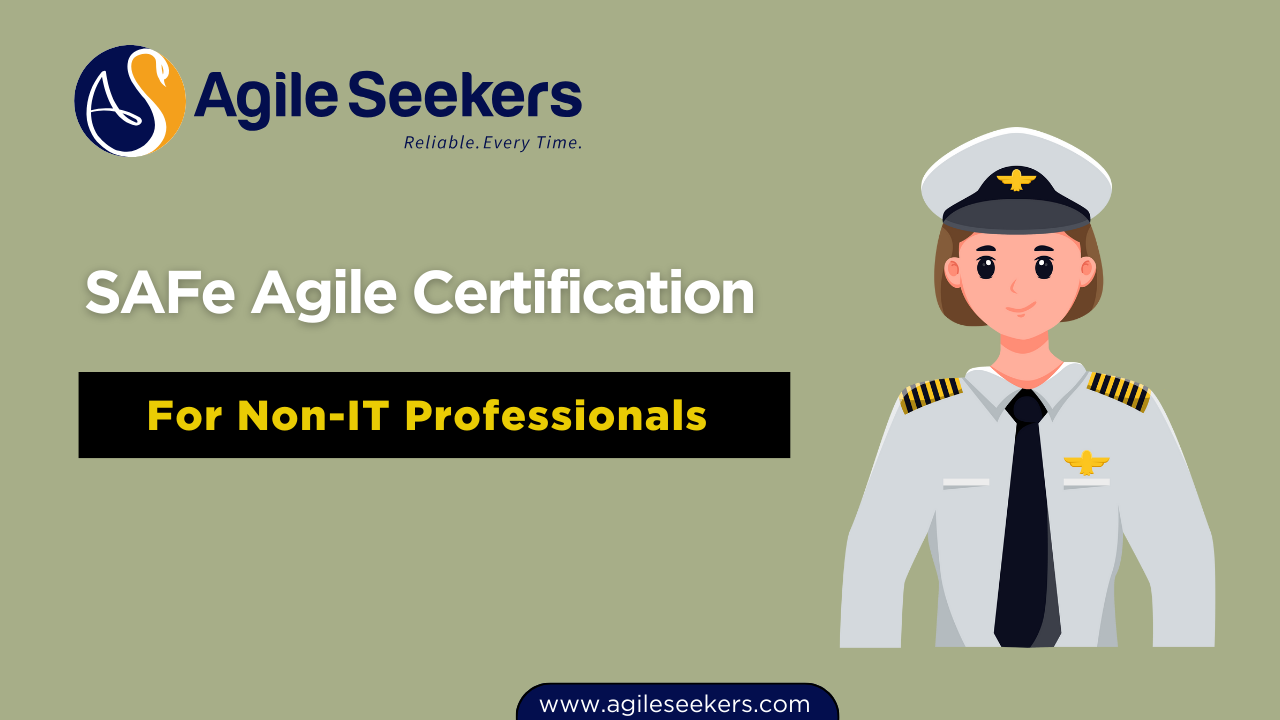SAFe Agile Certification for Non-IT Professionals

Agile has long been associated with software development, but its principles have grown beyond the walls of IT departments. Today, Agile is transforming how entire organizations operate, from HR and finance to marketing and business leadership. One of the most recognized frameworks guiding this transformation is the Scaled Agile Framework (SAFe®). And at the heart of this is the SAFe Agile certification for non-IT professionals.
But is this certification truly relevant for professionals outside of IT? The answer is a resounding yes.
The Shift Toward Business Agility
Organizations today face a rapidly changing environment. Markets shift overnight, customer expectations evolve, and competition comes from unexpected places. In response, companies are embracing business agility — the ability to adapt quickly and deliver value faster. This shift is not just a concern for IT teams. It requires a cultural and operational transformation across the entire enterprise.
SAFe, or the Scaled Agile Framework, enables enterprises to implement Lean-Agile principles at scale. It provides a structured approach to aligning strategy with execution across all departments. And this is exactly where non-IT professionals come into the picture.
Why Non-IT Professionals Should Consider SAFe Agile Certification
SAFe is not just for software developers or IT project managers. It addresses organizational agility, which impacts everyone from business leaders to functional departments like HR, finance, and marketing. Here’s how different non-IT roles benefit from understanding and applying SAFe principles:
1. Business Leaders
Business leaders set the vision, strategy, and culture of an organization. Through the Leading SAFe Certification, they can understand how Lean-Agile practices align with strategic goals. The certification provides insight into how value flows through the enterprise, helping leaders foster alignment, improve productivity, and accelerate innovation.
2. Human Resources (HR)
HR professionals play a pivotal role in shaping company culture, talent development, and organizational structure. SAFe emphasizes a Lean-Agile mindset and team empowerment. HR leaders who undergo SAFe Agile Certification are better equipped to support Agile transformations by updating job roles, performance management, and learning initiatives to align with Agile ways of working.
3. Finance
Traditional budgeting and funding models often clash with Agile's iterative approach. SAFe introduces Lean Portfolio Management, which encourages dynamic budgeting and investment funding based on real-time data. Finance professionals can leverage this knowledge to improve financial agility, optimize resource allocation, and contribute to faster decision-making.
4. Marketing
In Agile enterprises, marketing must be just as adaptive as product development. Agile marketing teams respond quickly to market feedback and customer insights. By understanding SAFe principles, marketers learn how to participate in cross-functional planning, synchronize with product releases, and deliver consistent messaging across channels.
The Role of Leading SAFe Training
Leading SAFe Training is the entry point for professionals seeking to adopt a Lean-Agile mindset at scale. The course is designed for leaders, managers, and change agents across all domains. It covers:
-
The principles of SAFe and Lean-Agile thinking
-
How to lead Agile transformation across the enterprise
-
The role of Agile Release Trains (ARTs)
-
Strategic alignment and value stream coordination
More importantly, it gives non-IT professionals a common language to collaborate with IT teams, product owners, Scrum Masters, and Agile coaches.
SAFe Agilist Certification: Building Cross-Functional Synergy
Earning the SAFe Agilist Certification demonstrates that a professional understands how to apply SAFe in real-world situations. For non-IT roles, this means being able to:
-
Participate effectively in PI (Program Increment) planning
-
Understand Agile metrics and KPIs
-
Foster a culture of continuous learning and relentless improvement
-
Improve team dynamics and collaboration across departments
Common Misconceptions Debunked
1. “Agile is only for developers.” This is perhaps the biggest myth. Agile is a mindset and methodology that applies to how value is delivered. Whether you're creating a marketing campaign or redesigning HR policies, Agile principles can enhance collaboration and speed to market.
2. “Non-IT professionals won’t benefit from Agile training.” In reality, organizations with the most successful Agile transformations are those where HR, finance, and business leaders are actively involved. SAFe training ensures that everyone speaks the same language.
3. “SAFe is too technical for non-IT roles.” While some SAFe roles are technical, the foundational training focuses on leadership, collaboration, and value delivery. It is fully accessible to professionals from any background.
Real-World Success Stories
Many organizations across industries have empowered their non-IT staff with SAFe training. HR departments have restructured performance management to support Agile teams. Finance divisions have adopted rolling forecasts and lean budgeting. Marketing teams have aligned their content cycles with development releases, improving customer engagement and ROI.
A global retail company, for example, trained their business leaders and HR heads alongside IT managers. The result? A seamless Agile transformation that improved time-to-market, employee engagement, and cross-functional collaboration.
How to Get Started
If you're a non-IT professional looking to contribute to your organization's Agile transformation, pursuing SAFe Agile Certification for non-IT professionals is a powerful step. Whether you're in HR, finance, marketing, or executive leadership, you have a vital role to play.
Start with the Leading SAFe training, gain the SAFe Agilist certification, and become a change agent in your enterprise.
Final Thoughts
Agility is no longer confined to IT. It’s a business imperative. For organizations to thrive, they need leaders and professionals across all functions to embrace Agile principles.
The SAFe Agile certification for non-IT professionals is not just relevant — it's essential. It helps you understand how to align with Agile teams, drive value, and lead with purpose in a rapidly evolving world.
Ready to transform the way your organization works? Explore Leading SAFe Certification today and become a catalyst for enterprise-wide agility.




















